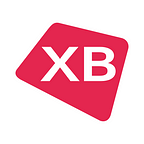The Test of Time: How Online Platforms Reshape Traditional Educational Assessments
The US EdTech Top 40 Report mentions that “classroom response and assessment” is the most adopted educator-focused product category at 12.5%. And this is not a surprise considering that any type of testing, whether online or onsite, helps not only to assess your knowledge and skills but also to see the path to improvement.
That is why the future of online exam systems is poised for significant growth and is shaping up to be quite innovative and secure. For example, with the integration of Artificial Intelligence, EdTech platforms are becoming more sophisticated in proctoring and testing, and security practices are allowing facial and behavioral analysis to prevent cheating. Dual camera systems are being introduced for a more comprehensive monitoring during exams. Secure browser technologies are evolving to provide a controlled testing environment, minimizing the risk of fraud.
All of the latest innovations are not only transforming the educational landscape but are also finding applications in professional certifications, corporate training, and even governmental procedures. The impact on traditional education platforms is profound, as online testing offers a flexible, scalable, and efficient alternative to conventional methods, leading to a reevaluation of assessment strategies across the globe. So, let’s look closer at the rapid evolution of online testing and online exam systems and see what we have under the magnifying glass.
What We Have Now: The Role of Assessments in Educational Process
In essence, assessments are integral to the educational system, bridging the gap between teaching and learning and ensuring that the goals of education are being met. They are not just about measuring knowledge. They are about enhancing the learning experience and preparing students for the future. Any assessment tool serves multiple critical functions that contribute to the overall experience, so let’s take a closer look at them.
- Diagnostic Tool. Assessments help identify students’ prior knowledge, strengths, and areas that need improvement, guiding educators in tailoring their teaching strategies.
- Learning Process Gauge. Testing platforms measure the effectiveness of instructional methods and curriculum, indicating whether examinees are meeting the learning objectives or not.
- Feedback Mechanism. Testing software opens the door to providing feedback, allowing both instructors and examinees to be informed about the progress and understanding of the subject matter.
- Motivational Driver. Well-designed assessments can not only motivate learners to engage with the material and strive for mastery but also encourage the development of critical thinking, problem-solving, and the application of knowledge in various contexts.
- Future Preparation. By using assessment systems to make decisions about grades, placement, and advancement, you impact students’ academic journeys. Thus, you are able to prepare them for future challenges by simulating real-world tasks and problems within a controlled environment.
The landscape of online testing platforms is changing really fast due to the latest technological advancements. Therefore, combining the advantages of assessment tools and modern technologies is the key goal for many organizations.
What We Strive For: Profound Impact on Traditional Education Systems
In the ever-evolving landscape of education, the rise of online testing platforms has been nothing short of revolutionary. As we sail into the digital future, …
Continue reading: https://xbsoftware.com/blog/evolution-of-online-testing/
